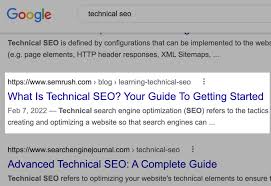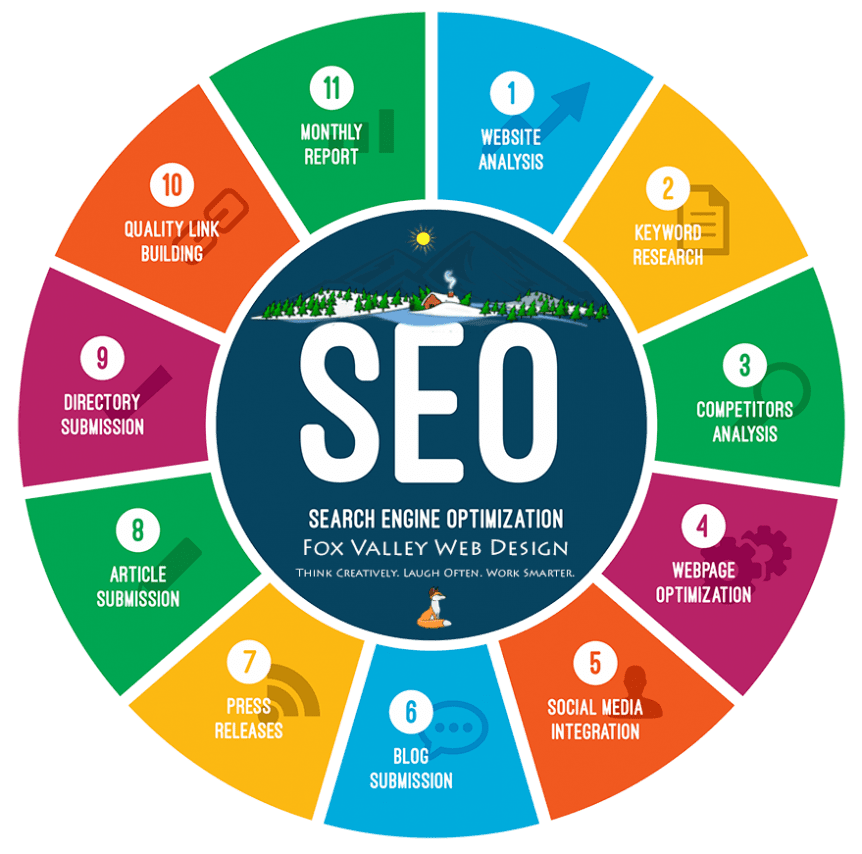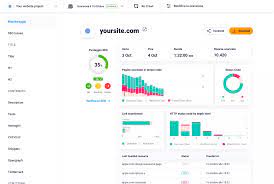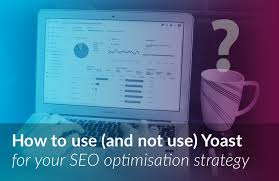The Power of SEO Online
The Power of SEO Online
In today’s digital age, having a strong online presence is crucial for businesses to succeed. Search Engine Optimization (SEO) plays a vital role in ensuring that your website ranks high on search engine results pages (SERPs) and attracts organic traffic.
SEO online involves various strategies and techniques aimed at improving your website’s visibility and relevance to search engines like Google, Bing, and Yahoo. By optimising your site’s content, meta tags, keywords, and backlinks, you can enhance its chances of appearing at the top of search results when users look for relevant information.
Benefits of SEO Online:
- Increased Visibility: Effective SEO practices can boost your website’s visibility, making it easier for potential customers to find you online.
- Higher Rankings: By optimising your site according to search engine algorithms, you can improve its ranking on SERPs and outperform competitors.
- Targeted Traffic: SEO helps attract targeted traffic interested in your products or services, increasing the likelihood of conversions.
- Improved User Experience: Optimising your site for SEO often leads to a better user experience by providing relevant and valuable content to visitors.
- Cost-Effective Marketing: Compared to traditional advertising methods, SEO is a cost-effective way to reach a wider audience and generate leads.
Key Elements of Successful SEO Online Strategies:
- Keyword Research: Identifying relevant keywords that users are searching for in your industry is essential for creating targeted content.
- On-Page Optimization: Optimising meta tags, headings, URLs, and internal links on your website helps search engines understand the context of your pages.
- Quality Content: Creating high-quality, engaging content that provides value to users is crucial for SEO success.
- Link Building: Acquiring backlinks from reputable sites improves your site’s authority and credibility in the eyes of search engines.
- Analytics Monitoring: Tracking key metrics like traffic sources, bounce rates, and conversion rates helps evaluate the effectiveness of your SEO efforts.
In conclusion, investing in SEO online can significantly impact your digital marketing strategy and overall business growth. By implementing effective SEO practices tailored to your target audience and industry trends, you can establish a strong online presence that drives organic traffic and boosts conversions.
25 Common Questions About SEO: A Guide to Getting Started and Improving Your Website’s Performance
- How can I check my SEO score for free?
- Can I do SEO for free?
- Can I SEO my own website?
- Can SEO be done free?
- Can I do SEO by my self?
- How to do SEO on Google?
- Can I do my own SEO?
- How can I do SEO for my website?
- What is SEO in online?
- Is SEO free to use?
- How do you do SEO for a website?
- How can I SEO my website for free?
- How do I check my SEO status?
- How can I check my SEO?
- How can I test my SEO?
- How do I SEO my website for free?
- How can I get SEO online?
- How to do SEO on website?
- How do I check my SEO online?
- What is the best online SEO test?
- How do I do SEO for a website?
- What is the best free SEO?
- How do I SEO my website?
- How can I do SEO for free?
- How do beginners do SEO?
How can I check my SEO score for free?
To check your SEO score for free, there are various online tools available that can provide you with valuable insights into the performance of your website. By using tools like Google’s PageSpeed Insights, SEMrush, Moz’s Domain Analysis, or Ahrefs’ Site Audit, you can assess factors such as page loading speed, backlink quality, keyword rankings, and overall site health. These tools analyse your website based on SEO best practices and provide recommendations for improvement to help you enhance your online visibility and ranking on search engine results pages. Regularly monitoring your SEO score using these free tools can help you track progress and make informed decisions to optimise your website for better search engine performance.
Can I do SEO for free?
It is a common query in the realm of SEO online: “Can I do SEO for free?” While it is possible to implement some basic SEO strategies without incurring costs, achieving significant results typically requires investment in time, resources, and expertise. Free SEO tools and resources can help you get started with keyword research, on-page optimisation, and monitoring performance. However, to compete effectively in the digital landscape and outrank competitors, engaging professional SEO services or investing in paid tools may be necessary. Ultimately, the decision to pursue free SEO or invest in professional assistance depends on your goals, budget, and commitment to achieving sustainable online visibility.
Can I SEO my own website?
When it comes to the frequently asked question, “Can I SEO my own website?” the answer is a resounding yes. While implementing SEO strategies for your website can be a challenging task, it is entirely possible for individuals to optimise their site effectively. By educating yourself on SEO best practices, conducting thorough keyword research, creating high-quality content, and building relevant backlinks, you can enhance your website’s visibility and ranking on search engine results pages. However, staying updated on the ever-evolving landscape of SEO algorithms and trends is crucial to maintaining long-term success in optimising your own website.
Can SEO be done free?
When it comes to the question of whether SEO can be done for free, the answer is both yes and no. While there are certainly free resources and tools available for basic SEO practices such as keyword research, on-page optimisation, and content creation, achieving significant results often requires a more comprehensive approach that may involve investing in paid tools or professional services. Free SEO efforts can certainly make a difference, especially for small businesses or individuals with limited budgets, but to compete effectively in competitive online markets and see substantial long-term benefits, a combination of free and paid strategies is usually recommended. Ultimately, the effectiveness of free SEO depends on the time, effort, and expertise put into implementing these strategies.
Can I do SEO by my self?
When it comes to the frequently asked question, “Can I do SEO by myself?” the answer is yes, you can certainly attempt to do SEO on your own. However, it’s important to understand that Search Engine Optimization is a complex and ever-evolving field that requires a deep understanding of algorithms, keyword research, content creation, and technical aspects of website optimisation. While there are plenty of online resources and guides available to help you learn the basics of SEO, achieving significant results often requires expertise and experience. Working with professional SEO specialists can provide you with tailored strategies and insights that maximise your website’s visibility and performance in search engine rankings.
How to do SEO on Google?
When it comes to doing SEO on Google, the key lies in understanding and implementing best practices that align with Google’s search algorithm. To optimise your website for Google search, start by conducting thorough keyword research to identify relevant terms and phrases that your target audience is searching for. Next, focus on creating high-quality, valuable content that incorporates these keywords naturally. Ensure your website is user-friendly, mobile-responsive, and loads quickly to provide a positive user experience. Additionally, building quality backlinks from reputable sites and regularly monitoring your site’s performance through analytics are essential steps in improving your SEO on Google. By staying updated on algorithm changes and consistently refining your SEO strategies, you can enhance your visibility and rankings on Google search results pages.
Can I do my own SEO?
Many individuals wonder, “Can I do my own SEO?” While it is possible for individuals to attempt SEO on their own, it requires a deep understanding of search engine algorithms, keyword research, on-page optimization, link building, and analytics monitoring. Successful SEO demands time, dedication, and ongoing effort to stay abreast of industry trends and algorithm updates. Working with a professional SEO agency or consultant can often yield more effective results and save time in the long run. However, with the right resources and commitment to learning, some individuals may find success in managing their own SEO strategies.
How can I do SEO for my website?
To effectively do SEO for your website, it is essential to start by conducting thorough keyword research to identify relevant terms and phrases that your target audience is searching for. Optimise your website’s meta tags, headings, URLs, and content with these keywords to improve its visibility on search engine results pages. Create high-quality, engaging content that provides value to users and encourages them to stay on your site. Focus on building quality backlinks from reputable websites to enhance your site’s authority and credibility. Regularly monitor and analyse key metrics using tools like Google Analytics to track the performance of your SEO efforts and make necessary adjustments for continuous improvement. By following these steps and staying informed about the latest SEO trends and best practices, you can effectively boost your website’s search engine rankings and attract organic traffic.
What is SEO in online?
Search Engine Optimization (SEO) in the online realm refers to the practice of enhancing a website’s visibility and ranking on search engine results pages (SERPs) through strategic techniques and tactics. SEO online involves various processes such as keyword research, on-page optimization, content creation, and link building to improve a website’s relevance and authority in the eyes of search engines. By implementing SEO best practices, businesses can attract organic traffic, increase their online presence, and ultimately drive more conversions. In essence, SEO in the online domain is a fundamental digital marketing strategy that aims to optimise websites for better visibility and performance in search engine results.
Is SEO free to use?
When it comes to the frequently asked question, “Is SEO free to use?”, the answer lies in understanding the nature of Search Engine Optimization. While SEO itself is not a paid service or tool that requires a direct financial investment, implementing effective SEO strategies does require time, effort, and expertise. Creating high-quality content, conducting keyword research, optimizing website structure, and building backlinks all demand resources and dedication. Therefore, while SEO can be considered a cost-effective long-term marketing strategy compared to paid advertising, it is not entirely free in terms of the commitment needed to achieve sustainable results in improving website visibility and organic traffic.
How do you do SEO for a website?
Optimising a website for search engines involves a strategic approach to improve its visibility and ranking in search results. To do SEO for a website effectively, start by conducting thorough keyword research to identify relevant terms and phrases that your target audience is searching for. Next, focus on on-page optimisation by creating high-quality content that incorporates these keywords naturally, optimising meta tags, headings, and URLs. Building quality backlinks from reputable sites can also enhance your site’s authority. Regularly monitoring and analysing performance metrics using tools like Google Analytics is crucial to track progress and make data-driven adjustments to your SEO strategy. By implementing these key steps and staying updated on industry best practices, you can enhance your website’s SEO performance and attract organic traffic effectively.
How can I SEO my website for free?
Optimising your website for search engines without breaking the bank is indeed possible through various free SEO strategies. To SEO your website for free, start by conducting thorough keyword research to identify relevant terms that your target audience is searching for. Incorporate these keywords strategically into your website’s content, meta tags, and headings to improve its visibility on search engine results pages. Additionally, focus on creating high-quality and engaging content that provides value to users while also attracting natural backlinks from reputable sources. Leveraging free tools like Google Search Console and Google Analytics can help you monitor your site’s performance and make informed decisions to enhance its SEO. By consistently implementing these cost-effective tactics, you can effectively optimise your website for search engines without incurring additional expenses.
How do I check my SEO status?
To check your SEO status, you can start by conducting a comprehensive website audit using online tools like Google Search Console and SEMrush. These tools provide valuable insights into your site’s performance, including indexing status, keyword rankings, backlink analysis, and more. Additionally, monitoring key metrics such as organic traffic, bounce rates, and conversion rates can help assess the effectiveness of your SEO efforts. Regularly reviewing and updating your content with relevant keywords and meta tags is essential for maintaining a strong SEO status. Collaborating with SEO experts can also provide in-depth analysis and recommendations to improve your website’s visibility and ranking on search engine results pages.
How can I check my SEO?
To check your SEO performance, there are several tools and methods available that can provide valuable insights into the effectiveness of your website’s search engine optimisation. One common approach is to use online SEO audit tools that analyse various aspects of your site, such as on-page elements, backlinks, and technical issues. Additionally, monitoring key metrics like organic traffic, keyword rankings, and conversion rates through platforms like Google Analytics can help you assess the impact of your SEO efforts. Regularly reviewing these metrics and making necessary adjustments based on the findings can help improve your website’s visibility and ranking on search engine results pages.
How can I test my SEO?
Testing your SEO strategy is essential to ensure that your website is optimised for search engines and driving organic traffic effectively. One way to test your SEO is by conducting a comprehensive website audit using tools like Google Search Console, SEMrush, or Moz. These tools can provide valuable insights into your site’s performance, including issues with metadata, broken links, keyword rankings, and more. Additionally, you can test your SEO by performing keyword research to identify relevant terms for your industry and monitoring your site’s visibility on search engine results pages (SERPs). Regularly analysing and adjusting your SEO tactics based on testing results will help you improve your website’s search engine ranking and attract more qualified traffic.
How do I SEO my website for free?
Optimising your website for search engines without incurring costs is indeed a common query in the realm of SEO online. To SEO your website for free, start by conducting thorough keyword research to identify relevant terms that your target audience is searching for. Utilise these keywords strategically in your website’s content, meta tags, and headings to enhance its visibility on search engine results pages. Focus on creating high-quality, informative content that resonates with users and encourages engagement. Additionally, optimise your website’s loading speed, improve its mobile responsiveness, and ensure proper internal linking to enhance user experience and boost SEO performance organically. Regularly monitor your site’s analytics to track progress and make necessary adjustments to further optimise its SEO for free.
How can I get SEO online?
To get SEO online, you can start by conducting thorough research on SEO best practices and understanding the fundamentals of search engine optimisation. It is essential to identify relevant keywords for your website and create high-quality content that aligns with those keywords. Implementing on-page optimisation techniques, such as meta tags, headings, and internal links, can also improve your site’s visibility to search engines. Additionally, building a strong backlink profile from reputable websites can enhance your site’s authority and credibility. Consider partnering with experienced SEO professionals or agencies to develop a customised SEO strategy tailored to your business goals and target audience. By consistently monitoring and refining your SEO efforts, you can gradually improve your online visibility and attract organic traffic to your website.
How to do SEO on website?
Optimising a website for search engines, known as SEO, involves several key steps to improve its visibility and ranking on search engine results pages. To do SEO on a website effectively, one must start by conducting thorough keyword research to identify relevant terms and phrases that potential visitors are searching for. Next, on-page optimisation techniques such as creating high-quality content, optimising meta tags, headings, and URLs, and improving site speed are essential. Additionally, building quality backlinks from reputable sites and monitoring performance through analytics tools are crucial aspects of a successful SEO strategy. By implementing these best practices and staying up-to-date with the latest algorithm changes, businesses can enhance their online presence and attract organic traffic to their website.
How do I check my SEO online?
To check your SEO online, there are several tools and methods available to assess the effectiveness of your website’s search engine optimisation. One common approach is to use online SEO audit tools that analyse various aspects of your site, such as meta tags, keywords, backlinks, and overall performance. Additionally, monitoring your website’s ranking on search engine results pages (SERPs) for relevant keywords can provide insights into its visibility and competitiveness. Regularly reviewing analytics data, including traffic sources, user engagement metrics, and conversion rates, can also help evaluate the impact of your SEO efforts and identify areas for improvement. By combining these strategies and staying informed about SEO best practices, you can effectively check and optimise your SEO online presence for better visibility and results.
What is the best online SEO test?
When it comes to determining the best online SEO test, it is essential to consider various factors such as the comprehensiveness of the test, the credibility of the provider, and how well it aligns with current SEO practices. The ideal online SEO test should cover a range of topics including keyword research, on-page optimization, link building strategies, and analytics monitoring. Additionally, reputable platforms offering these tests often provide certifications or badges that can validate your proficiency in SEO to potential clients or employers. It is advisable to research and choose an online SEO test that not only evaluates your knowledge but also equips you with practical skills to excel in the dynamic field of search engine optimization.
How do I do SEO for a website?
Optimising a website for search engines, known as SEO, involves several key steps to enhance its visibility and ranking on search engine results pages. Firstly, conducting thorough keyword research to identify relevant terms that users are searching for is essential. Incorporating these keywords strategically into website content, meta tags, and URLs helps search engines understand the site’s relevance to specific queries. Additionally, creating high-quality and engaging content that provides value to visitors is crucial for SEO success. Implementing on-page optimisation techniques such as improving site speed, mobile responsiveness, and internal linking structure also plays a significant role in boosting a website’s SEO performance. Lastly, building quality backlinks from reputable sites can further establish the website’s authority and credibility in the eyes of search engines. By following these fundamental SEO practices and staying informed about industry trends and algorithm updates, one can effectively optimise a website for improved visibility and organic traffic.
What is the best free SEO?
When it comes to the frequently asked question, “What is the best free SEO?”, it’s important to understand that while there are various free SEO tools and resources available, the effectiveness of each tool may vary depending on your specific needs and goals. Some popular free SEO tools include Google Search Console, Google Analytics, and tools like MozBar and SEMrush. These tools can help you analyse website performance, track keyword rankings, and identify areas for improvement. However, for a comprehensive and tailored SEO strategy, investing in professional SEO services or premium tools may be necessary to achieve optimal results in the competitive online landscape.
How do I SEO my website?
Optimising your website for search engines, commonly referred to as SEO, involves a series of strategic steps to improve its visibility and ranking on search engine results pages. To SEO your website effectively, start by conducting thorough keyword research to identify relevant terms and phrases that your target audience is searching for. Incorporate these keywords naturally into your website’s content, meta tags, headings, and URLs. Focus on creating high-quality, informative content that addresses the needs of your visitors and provides value. Additionally, ensure that your website is technically sound by optimising its loading speed, mobile responsiveness, and navigation structure. Regularly monitor your site’s performance using analytics tools to track key metrics and make data-driven improvements to enhance its SEO performance over time.
How can I do SEO for free?
For those looking to enhance their online presence without incurring additional costs, implementing SEO strategies for free can be a viable option. To do SEO for free, individuals can start by conducting thorough keyword research to identify relevant terms and phrases that align with their content. Optimising website content with these keywords, improving meta tags, enhancing site speed, creating high-quality backlinks through guest posting or social media engagements, and regularly updating and promoting content are all effective ways to boost organic search visibility without financial investment. Additionally, leveraging free SEO tools such as Google Analytics, Google Search Console, and various online resources can provide valuable insights and guidance in improving website performance and ranking on search engine results pages.
How do beginners do SEO?
For beginners looking to delve into the world of SEO online, starting with the basics is key. Understanding fundamental concepts such as keyword research, on-page optimization, and creating quality content is crucial. Beginners can begin by familiarising themselves with popular SEO tools and resources available online to gain insights into industry best practices. It’s essential to stay updated on search engine algorithms and trends while gradually implementing SEO strategies on their own website or blog. Seeking guidance from reputable sources and experimenting with different techniques can help beginners build a solid foundation in SEO and pave the way for future success in improving online visibility and driving organic traffic.









